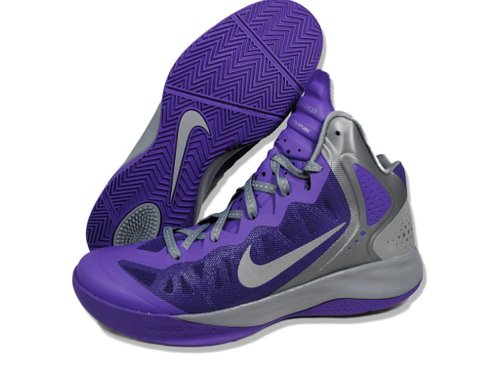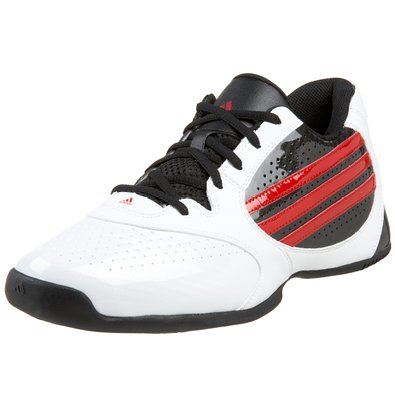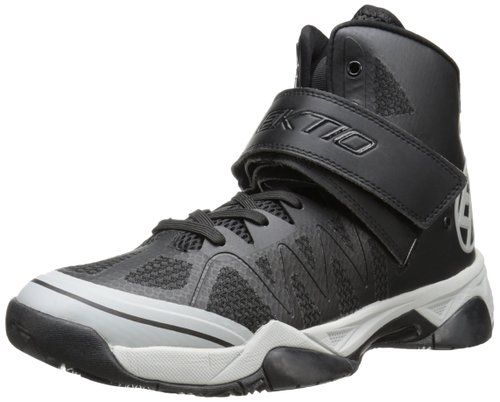Best traction basketball shoes
In this article, we will be talking about the many elements of something that can be overlooked when buying basketball shoes. It is always so easy to focus on the design, fit and comfort of the shoe but what will really keep you playing at your very best is the traction gained by the shoe. Without good traction a basketball shoe becomes useless. We can take a closer look at the types of traction, what to look out for and the dangers of having shoes that won’t hold the court.
Contents
What is Traction and Why is it So Important?
Traction is the term used to describe the grip the shoe holds with the ground. Without it, you may as well not be wearing any shoes so it is understandable why it makes such a difference when looking at which shoes are best for you.
With a pair of shoes with the weak traction, it will be impossible to play even close to your best. Any reaction you may have will be greatly harbored by a pair of shoes that do not respond as quickly as you do. Movements will be sloppy and it will be impossible to make quick direction changes as the shoes you wear slip out from beneath you.
It is understandable that this also becomes a health risk. Without the necessary reliability on the base of the shoe, slipping will become a problem resulting in injuries from falling or rolled ankles.
How do our Shoes Provide Traction?
Traction is provided in more ways than simply through the sole of the shoe although that is a very large part. Shoe companies have put a lot of research and money into making sure their shoes provide all the grip you need on any surface you chose to play on.
The material of the outer sole is the first thing people think of when talking about traction, some materials will be too soft to really stand up to hard surfaces but if the material is too tough it will not grip the floor properly and will make the shoes slip out. What a good trainer will do is have the balance of soft and hard materials to give grip no matter what surface is being played on.
One thing people don’t think so much about with traction is the actual fit of the shoe. If the shoe fits loosely or does not lock the foot into the shoe, rolling and lack of control will be felt and the grip will suffer. The height of the ankle comes into play also when talking about the fit. Certain heights will aid in different types of traction benefits. When looking to be the jumping forward of a team, the high top design will aid in pushing the power of a jump from the leg right into the sole of the shoe for extra lift. When speeding around with quick pivots and movements it is the low top that will translate the quick leg and ankle movements to the ground for maximum efficiency.
Styles of Traction and Their Benefits
Traction pads on the soles of shoes come in a variety of styles that each have their pros and cons and are often designed for either the outdoor player or indoor gyms. A few of the more common styles to look out for are:
Hard rubbers – These are often seen on shoes for the outdoor player. They are less forgiving indoor but also pick up a lot less dirt and dust than soft sole shoes
Soft rubber – A great choice for the indoor player as they grip a slippery court with ease but they are inclined to pick up dust and lose traction quickly. They will also wear down quickly in harsher ground types.
Deep Groove – These allow a lot of flexibility on the ground which in turn takes away the amount of sole in contact with the floor and therefore lowers overall traction. Great for flexibility and losing little stones between the grooves but does suffer from lost traction.
Shallow Groove – keeps the whole foot on the floor but will lower flexibility. Also prone to picking up little stones and debris.
Herringbone – This design will be seen very often across the Air Jordan range. It proved a wonderful amount of grip and picks up little dust
Reviewing the Best Traction Shoes
We can take a look at these select group of shoes and weigh up their pros and cons in reference to the traction gained by their shoes. It will be possible to determine what kind of court and play style they will suit best.
1. Nike Kyrie 4

These futuristic-looking basketball shoes are designed specifically for Kyrie Irving. They feature a very individual multi-directional herringbone design. The sole is highly flexible and is able to provide grip in any direction. The grooves aren’t too deep and don’t seem to allow anything between the gaps. Very little wiping off is needed to maintain after the first few wears.
Pros
- Innovative multi-direction herringbone for all movement grip.
- Shallow grip.
- Doesn’t pick up dirt.
Cons
- Very flexible so will lose a little traction.
- Previous models seemed slightly better.
2. Adidas Dame 4

Classic looking low tops with a lightweight mesh outer and very sporty, high-speed look to them. They feature quite a soft sole that is described by Adidas to represent the ‘passage of time’. This interesting description is modeled with far spaced grips on a rather soft sole that holds onto an indoor court absolutely fantastically with minimal debris pick up.
Pros
- Great spacing between grips
- Innovative design.
- Minimal debris pickup.
- Great indoor grip.
Cons
- Soft soles are not great for outdoor play.
- Quickly worn down.
3. Adidas D Rose 8

Number eight in the series features a rather soft translucent sole traction pad in the zipper design. This leaves very small gaps to pick up debris and really doesn’t provide the grip it should. Speed and quick movements are not translated to the court with this sole and it mainly down to the odd grip design.
Pros
- Good tacky translucent rubber.
- Trustworthy previous range.
Cons
- Bad zipper design leaves a lot to be desired.
- Does not live up to previous versions.
- The grip does not hold up to speed play.
4. Nike Air Jordan 32

These Nike Air Jordan’s feature an alternating herringbone design that leaves the soles with a shallow diamond shape printed along the base. The translucent soles allow the rich red to show through. The shallow grip seems to pick up very little dust on the indoor court and get nothing stuck in between on an outside court. They will need very little wiping off.
Pros
- Shallow Grip picks up little dust.
- New design.
- Looks Great.
Cons
- Hard Plastic isn’t very forgiving.
- Shallow grips wear out quickly
5. Under Armour Curry 3

These Under Armour trainers have opted for the very popular herringbone design and it works fantastically. Alongside the new rubber compound they have used, the grip on the treads is exceptional for fast stops and rapid movements. The hard rubber makes them a great option for outdoor play but the shallow tread will wear down very quickly.
Pros
- Great rubber compound for amazing grip.
- Tried and tested herringbone design.
- Hard rubber for outdoor play.
Cons
- Shallow tread will wear out quickly.
Caring for the Traction on your Shoes
Along with buying a pair of shoes that will be reliable and provide the traction, you require for great gameplay it is very important to take good care of them yourself both on the court and off. Regular cleaning after a game to rid the soles of any debris, water, stones, and dirt will ensure that the next time you play they will be ready to go. Along with cleaning after use, a quick wipe down during play never goes amiss. It helps keep the dust off and keep tackiness and traction at its peak. Wearing your trainers only on the court will increase the life of the traction pads also. Minimising streetwear and mileage will keep the grooves deep and grip higher for longer.
In Conclusion
To wrap it all up we can see that there are many different types of traction pad all for different types of play and surface. Knowing what it is you want from your shoe gives you a head start in buying the one that is right for you. Ample care and attention should be paid to the shoe to keep them giving you the speed and maneuverability on the court you expect.




